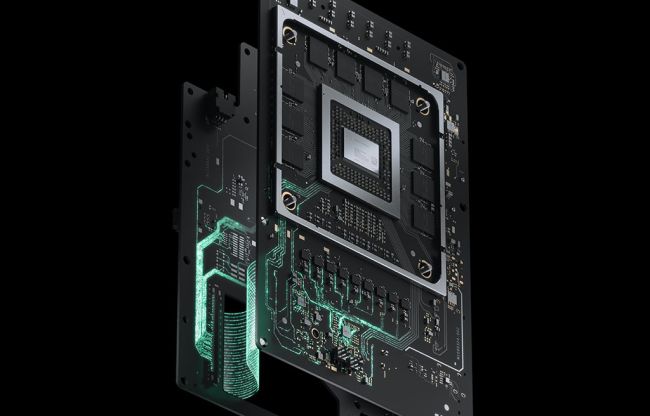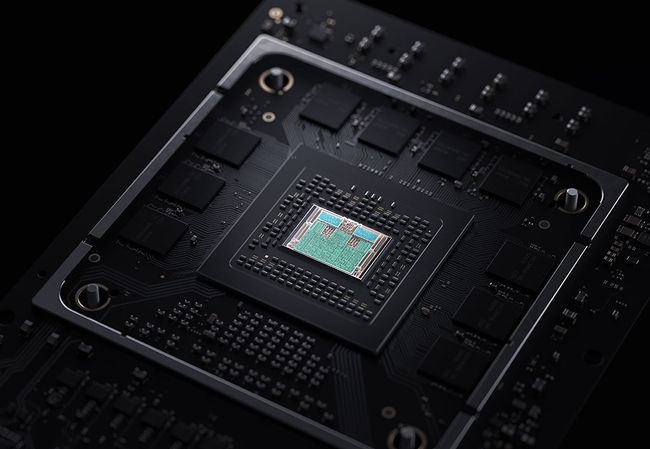The Xbox Series X is basically a monster gaming PC
Microsoft reveals more details about the hardware powering the Xbox Series X, and it’s seriously impressive.

The Xbox Series X isn’t even out yet and I already have upgrade envy. I’m still holding the line with a Core i7-4790K ‘Devil’s Canyon’ processor in my main PC, flanked by a GeForce GTX 1080 Ti and 32GB of RAM. It’s not exactly a slow rig by any means, even with a now-dated CPU, but the newly revealed specs of the Xbox Series X certainly outguns it in most areas. In fact, they could even outgun a high-end gaming PC you could build today.
The Xbox Series X is burlier than most current gaming PCs based on what Microsoft divulged in a blog post today. Granted, we already knew the Xbox Series X was bringing some serious hardware to the table, but now we have some real specs to process. Let’s get to it.
Starting with the CPU, the custom Zen 2 chip inside the Xbox Series X is rocking 8 cores at 3.8GHz, or 3.66GHz if a developer chooses to leverage simultaneous multi-threading (AMD’s equivalent to Intel’s hyper threading). This essentially breaks up physical cores into virtual cores, or threads, to crank through workloads more efficiently.
The Xbox Series X is using a custom CPU, so there is no direct equivalent on the PC. However, the closest in terms of specs is the Ryzen 7 3700X (a $300 CPU), which features 8 cores and 16 threads clocked at 3.6GHz (base) to 4.4GHz (max boost). It’s one of the best CPUs for gaming, though not quite on par with Intel’s Core i7-9700K.
On the graphics side, we knew the Xbox Series X was tapping a custom GPU based on AMD’s next-generation RDNA 2 architecture. Microsoft previously said it would serve up 12 TFLOPs of graphics power. It’s hard to glean too much from a TFLOPs figure, but now Microsoft has revealed it will feature 52 compute units clocked at 1.852GHz, with 16GB of GDDR6 memory.
To put that into perspective, a Radeon RX 5700 XT based on RDNA 1 wields 40 CUs with a 1,605MHz base clock, 1,755MHz ‘game’ clock, and 1,905MHz boost clock, and 8GB of GDDR6 memory. On Amazon, an RX 5700 XT is about $400 by itself.
So: The GPU inside the Xbox Series X has 30 percent more compute units, twice the memory, a faster clock (save for the 5700 XT’s ability to boost), and a fatter memory bus. On top of all that, it will benefit from whatever architectural upgrades RDNA 2 introduces. And let’s not forget about support for real-time ray tracing.
“Xbox Series X is the biggest generational leap of SoC [system on a chip] and API design that we’ve done with Microsoft, and it’s really an honor for AMD to be a trusted Microsoft partner for this endeavor,” AMD’s Sebastien Nussbaum said. “The Xbox Series X is going to be a beacon of technical innovation leadership for this console generation and will propagate the innovation throughout the DirectX ecosystem this year and into next year.”

CPU—8x cores @ 3.8GHz (3.66GHz w/ SMT), custom Zen 2
GPU—52 CUs @ 1.825GHz, 12 TFLOPs, custom RDNA 2
Die size—360.45mm2
Memory—16GB GDDR6 w/ 320mb bus
Memory bandwidth—10GB @ 560GB/s (6GB @ 336GB/s)
Storage—1TB custom NVMe SSD
I/O throughput—2.4GB/s (raw), 4.8GB/s (compressed with custom hardware decompression block)
Expandable storage—1TB expansion card
External storage—USB 3.2 externally HDD support
Optical drive—4K Blu-ray
Performance target—4K @ 60fps, up to 120fpsMicrosoft’s target performance is being able to maintain 60 fps at 4K, and up to 120 fps at lower resolutions (presumably 1080p). Load times should be fast as well.
On the storage side, the Xbox Series X comes with a custom 1TB NVMe solid state drive, which can be doubled by way of a proprietary expansion slot (that’s right, memory cards are back). If upgrading the storage with the proprietary slot, Microsoft says speeds will be the same as the speedy internal SSD, so expext those to be expensive. Users can also add an external drive via USB 3.2 to store games on, but it won’t run as fast, and you’ll have to transfer games to internal memory to actually run them.
One thing that plays into this is what Microsoft is calling Xbox Velocity Architecture. It’s a fancy term for what boils down to tighter integration between storage and software, which is optimized for streaming in-game assets.
“This will unlock new capabilities that have never been seen before in console development, allowing 100 GB of game assets to be instantly accessible by the developer. The components of the Xbox Velocity Architecture all combine to create an effective multiplier on physical memory that is, quite literally, a game changer,” Microsoft explains.
Microsoft provided some more details to Digital Foundry, for anyone who wants to take a deeper dive into the upcoming console and its features and capabilities. In short (too late, I know), it’s a monster gaming PC in console garb. Making a direct comparison is still hard to do because AMD has not yet released any GPUs for the PC that are based on RDNA 2, but those are coming this year.
In the meantime, I’m going to start plotting out my PC upgrade.




